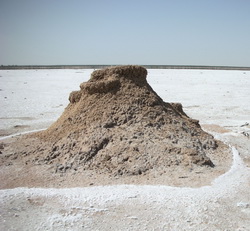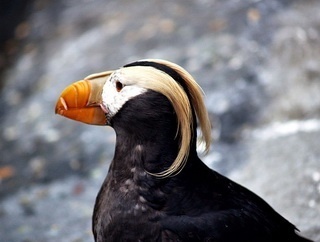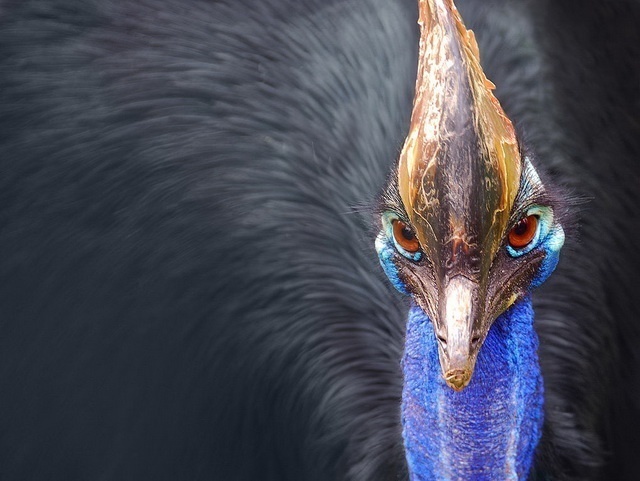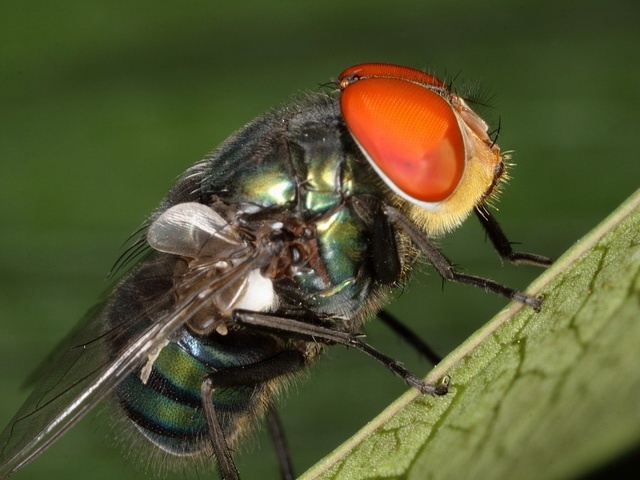Male desert locust protects female from sun
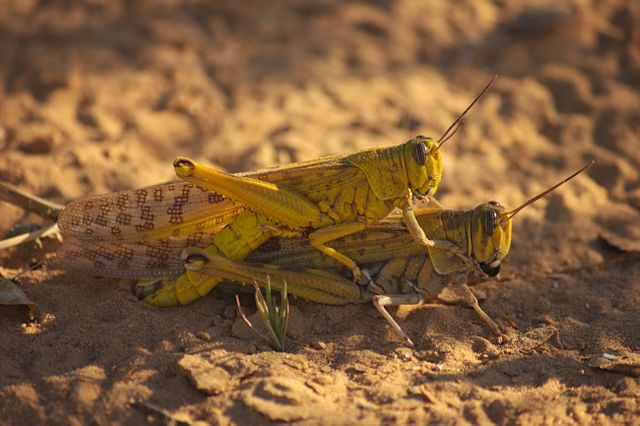
A female desert locust spends more than two hours to lay a batch of eggs in the hot sand of the Sahara. Usually, a male is sitting on her back, acting as a sunshade, Koutaro Ould Maeno and colleagues write.
Desert locust females produce about a hundred eggs at a time. They drill their abdomens into the sand and then sit still for more than two hours on average while the eggs leave her body. If they do the job during daytime, they must endure the scorching heat. How does the insect cope with that, Koutaro Ould Maeno and colleagues wondered.
They studied the behaviour of desert locusts, Schistocerca gregaria, in Mauritania during the so-called gregarious phase, when the animals live in groups. Males gather at leks during the day to attract females and copulate.
Possessive behaviour
After mating, a female stores the sperm; one mating provides enough sperm for several egg-laying sessions. A male invests a lot in mating, as it takes him hours. To ensure that she actually uses his sperm, he usually continues to guard her until she has laid eggs, keeping rivals away. This possessive behaviour limits her freedom to choose another partner, but in return she is not harassed by other males.
And it turns out to have still another advantage.
Most females lay their eggs at night, but some wait until the next morning. They avoid predators that are active during the cool night. But another danger is looming: it gets dangerously hot. Desert locusts can withstand much heat, but a temperature of 55°C or more is fatal, and it can get that hot in the sun. This is where the guard helps. When a female lays eggs, he sits on her back and functions nicely as a parasol, the researchers write.
Probably, this is also the case in a mating couple.
Cooler
Females that oviposit during the day cool down a bit because their abdomen extends into the ground; it is less hot there than at the surface. In addition, the researchers now show that an egg-laying female with a male on her back is cooler than a female without a guard. She is also cooler than the sand.
The guard himself also gets less hot than the sand because he is at a greater distance from the ground. When males attract females at a lek, they stand as high on their legs as possible to avoid overheating. In addition, the animals position themselves in such a way that they catch a minimum of solar radiation.
Desert locusts can live gregariously; then they gather, multiply rapidly and can become a plague that eats almost everything that is green, moving fast and far. But in dry periods they are solitary and occur in small numbers; the animals then live longer.
Willy van Strien
Photos:
Large: mating couple of desert locust. Adam Matan (Wikimedia Commons, Creative Commons CC BY-SA 3.0)
Small: ovipositing desert locust female without guarding male. Christiaan Kooyman (Wikimedia Commons, Creative Commons, public domain)
Sources:
Maeno, K.O., S. Ould Ely, S.A. Ould Mohamed, M.E.H. Jaavar, A.S. Benahi & M.A. Ould Babah Ebbe, 2024. Mate-guarding male desert locusts act as parasol for ovipositing females in an extremely hot desert environment. Ecology e4416, online 15 September. Doi: 10.1002/ecy.4416
Maeno, K.O., S. Ould Ely, S.A. Ould Mohamed, M.E.H. Jaavar & M.A. Ould Babah Ebbe, 2023. Thermoregulatory behavior of lekking male desert locusts, Schistocerca gregaria, in the Sahara Desert. Journal of Thermal Biology 112: 103466. Doi: 10.1016/j.jtherbio.2023.103466


